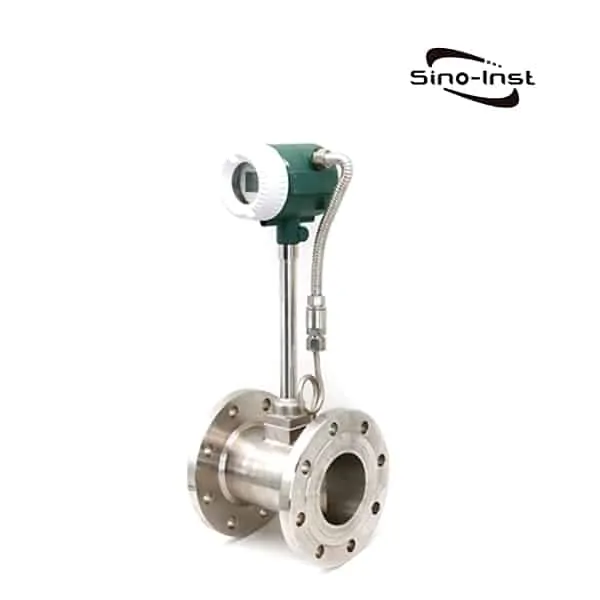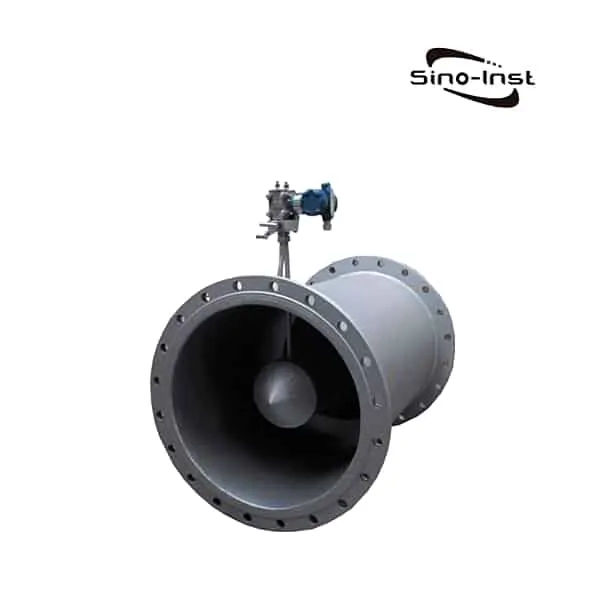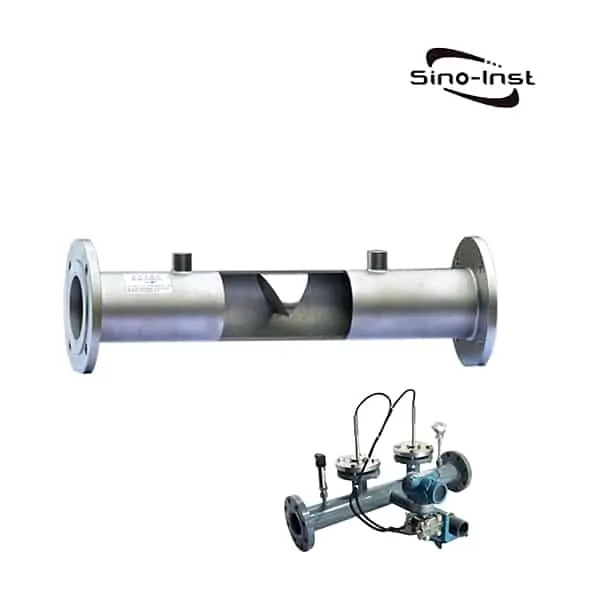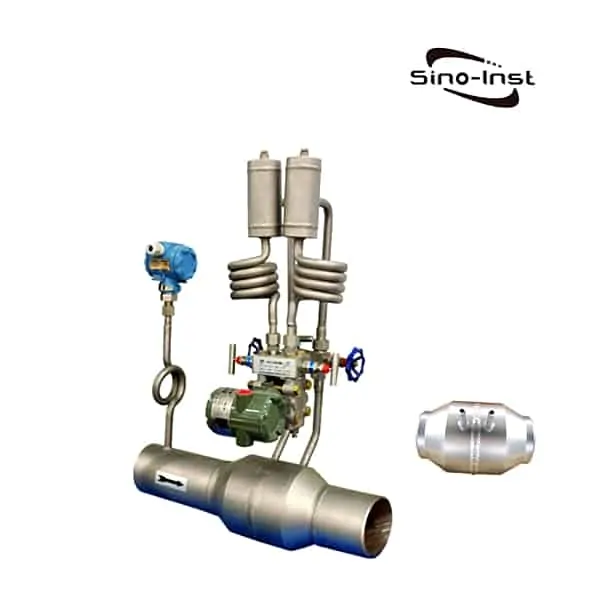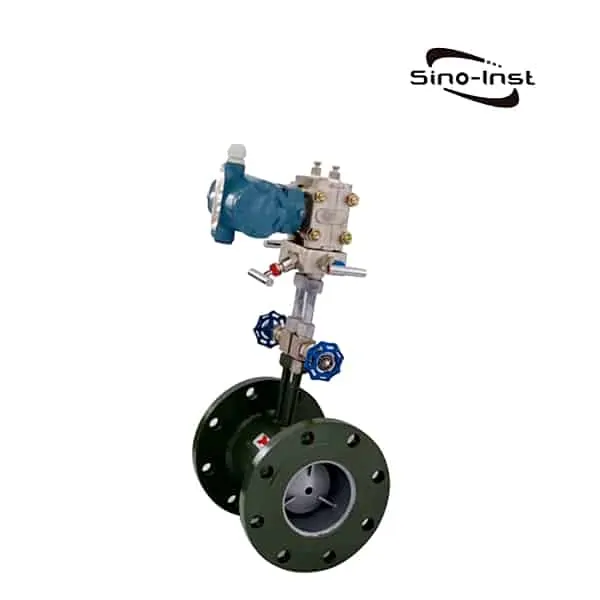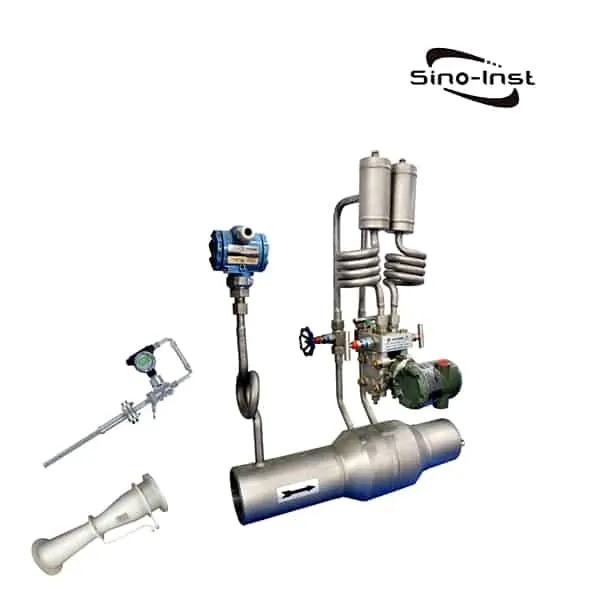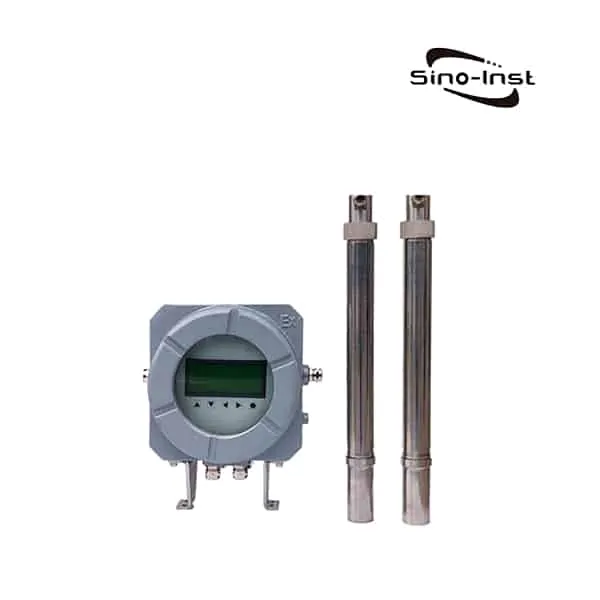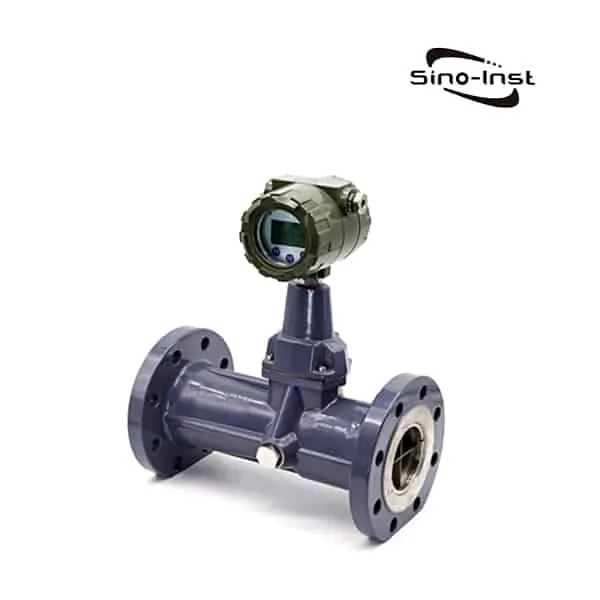Steam flow measurement has always been a problem. Today we solve a problem of temperature and pressure compensation. So Do you need temperature and pressure compensation for Steam Flow Measurement?
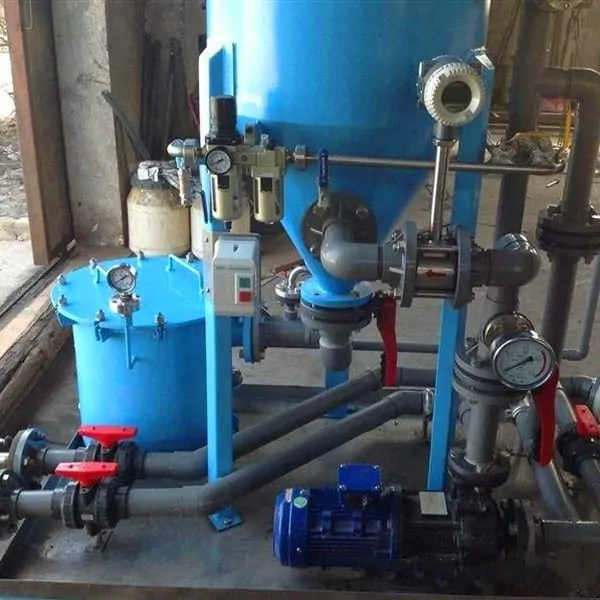
There are two types of steam, saturated steam and superheated steam.
The temperature and pressure compensation is superheated steam. For the real saturated steam, only temperature or pressure compensation is required. Check the density table according to the temperature and pressure during measurement to obtain the required mass flow.
Generally speaking, vortex flowmeter manufacturers will provide saturated and superheated steam mass flow range tables for users to select.
In the actual measurement, due to changes in working conditions, saturated steam and superheated steam are willing to deviate from the original design. It will change the relationship between steam temperature and pressure to obtain its density. Affect the accuracy of measurement.
Wet saturated steam
When the vortex flowmeter is installed behind the pressure reducing valve. The wet saturated steam suddenly decompresses greatly. The fluid undergoes adiabatic expansion. The water droplets partially evaporate. At the same time, the heat of vaporization is absorbed from the liquid and vapor phases. Reduce the vapor and liquid phase temperature.
If the temperature does not drop much or the humidity is high before evaporation, the temperature will quickly drop to the saturation temperature corresponding to the new pressure. Create a new balance. At this time, the steam is still saturated steam.
If the pressure drops a lot or the humidity is low before evaporation. After the temperature is lowered due to the evaporation of water droplets, it is still higher than the saturation temperature corresponding to the new pressure. The steam becomes superheated steam.
Superheated steam
In the flow calculator, the mass flow can be calculated according to the density of the superheated steam temperature and pressure. But when the superheated steam is transported over a long distance. Or due to improper pipe insulation measures. Often due to the decrease in heat loss temperature, it will enter the critical saturation state from the overheating state. Even part of the steam condenses and undergoes a phase change to become water droplets. At this time, it becomes wet saturated steam (supersaturated steam).
Read more about: Condensate Flow Meter-Steam Condensate Flow Meter|Types & Selection Guide
Featured Flow Meters for Steam Flow Measurement
Vortex flow meter for Steam Flow Measurement
The output of the vortex flowmeter is only proportional to the flow rate of the fluid flowing through the measuring tube. When measuring the humidity of saturated steam, the influence of water droplets on the output of the vortex flowmeter is negligible. Therefore, it can be considered that the output of the vortex flowmeter is completely caused by the dry part (saturated part) of the wet and saturated steam. The density of the dry part can be accurately detected according to pressure compensation or temperature compensation.
When steam metering, if the two parties agree to settle the cost based on the dry part of the steam, there is no charge for condensate. The influence of the phase change on the measurement is negligible and can be ignored. If the condensate is also charged as steam. The measurement result of the vortex flowmeter is low.
After the above evaporation occurs, the former has no effect on compensation. Only the dry part in the steam increases, and the dryness increases accordingly.
In the latter case, the wet saturated steam becomes superheated steam. At this time, the impact on the flowmeter is divided into the following three situations:
- The design has taken into account that the steam becomes superheated. Or in what state is difficult to determine. Or sometimes it is overheated and sometimes it is saturated. So use temperature and pressure compensation. Then the above-mentioned phase change has no influence on the measurement result.
- Consider saturated steam when designing, and adopt pressure compensation. Then the above-mentioned phase change will bring a smaller error. That is, the compensation error caused by the density difference corresponding to the difference between the superheated steam temperature and the saturated steam temperature.
- Consider saturated steam when designing. But use temperature compensation. That is, the superheated steam temperature is regarded as the saturation temperature to check the density table. Generally, large errors will be caused.
There are three ways to solve the above problems:
- Install the total steam flow meter before the pressure reducing valve. Because the above steam is not decompressed. There is no phase change problem. So install the flowmeter before the pressure reducing valve. According to the saturated steam compensation method. The measurement accuracy can be guaranteed.
- If the flow meter can only be installed behind the pressure reducing valve. A pressure transmitter can be added for temperature and pressure compensation.
- If the stability of the pressure reducing valve is better. The upstream pressure value of the flowmeter can be set as a constant value into the display instrument for temperature and pressure compensation.
- Flow Measurement Units-What Is GPM in Flow Meter?
- What Is a BTU Meter?
- Flow Rate and Pressure Relationship-How to Calculate?
- Water Flow Measurement for Pipes and Open Channels
- Industrial Helium Flow Meters
- 6″ Flow Meters List | 6 Inch- DN150 Connection
- What Is Vortex Flow Meter? and FAQs
- Guide to Pulse Flow Meters: Must Know Before Shopping!
- What Is Turbine Flow Meter? and FAQs
- What Is a Thermal Mass Flow Meter?
Sino-Inst, Manufacuturer for Steam Flow Measurement Flowmeters.
Sino-Inst’s Steam Flow Measurement Flowmeters, made in China, Having good Quality, With better price. Our Steam Flow Measurement instruments are widely used in China, India, Pakistan, US, and other countries.

Wu Peng, born in 1980, is a highly respected and accomplished male engineer with extensive experience in the field of automation. With over 20 years of industry experience, Wu has made significant contributions to both academia and engineering projects.
Throughout his career, Wu Peng has participated in numerous national and international engineering projects. Some of his most notable projects include the development of an intelligent control system for oil refineries, the design of a cutting-edge distributed control system for petrochemical plants, and the optimization of control algorithms for natural gas pipelines.

